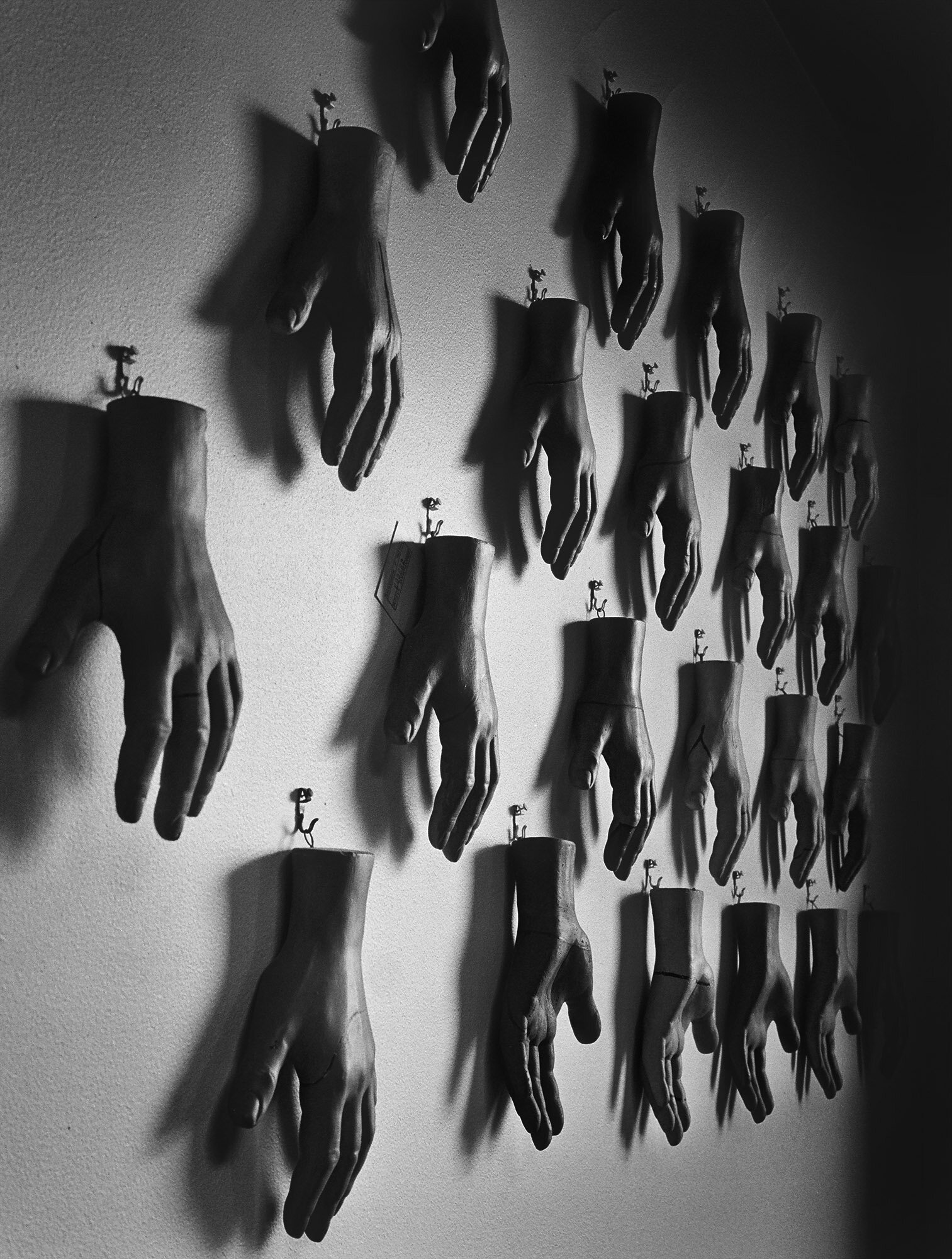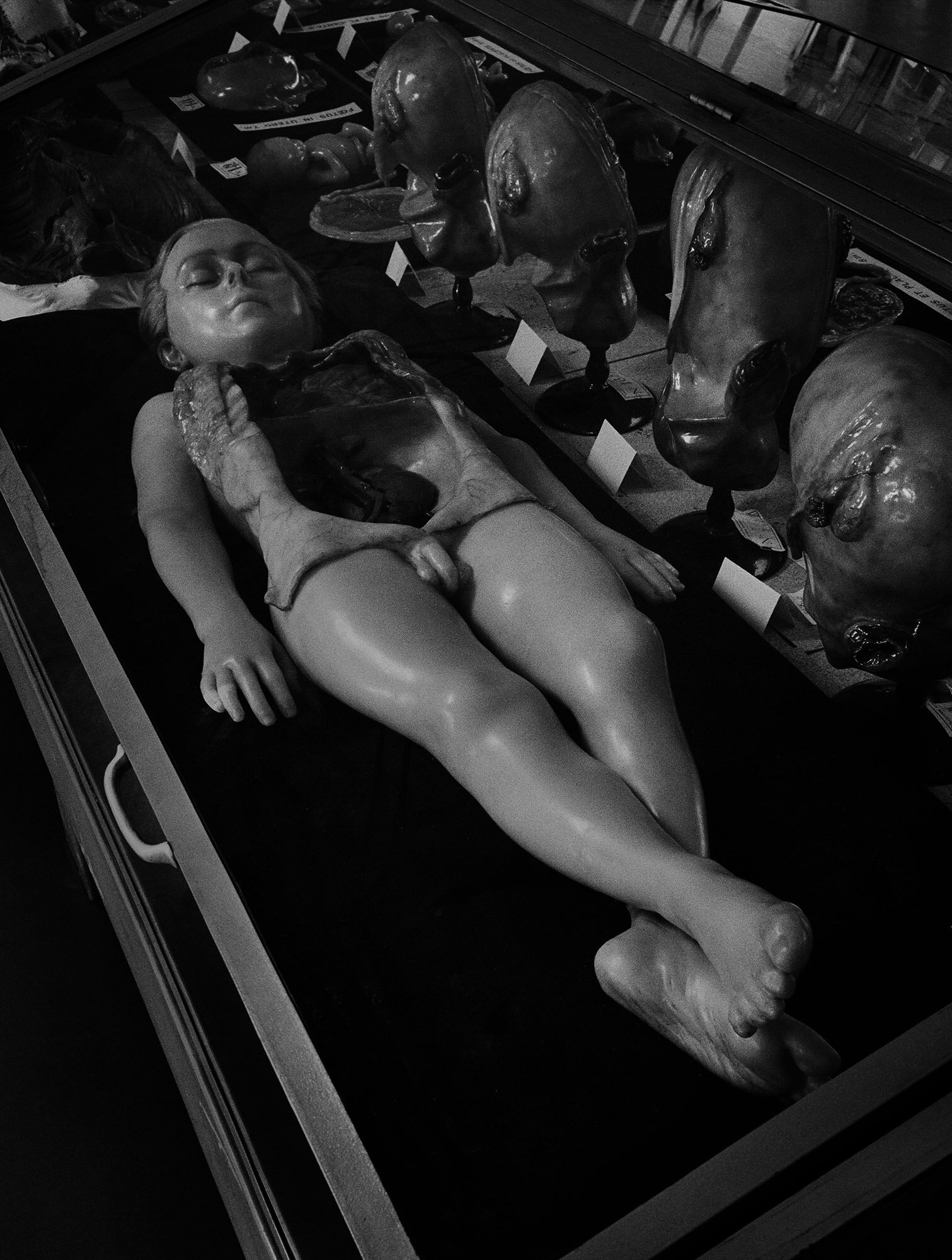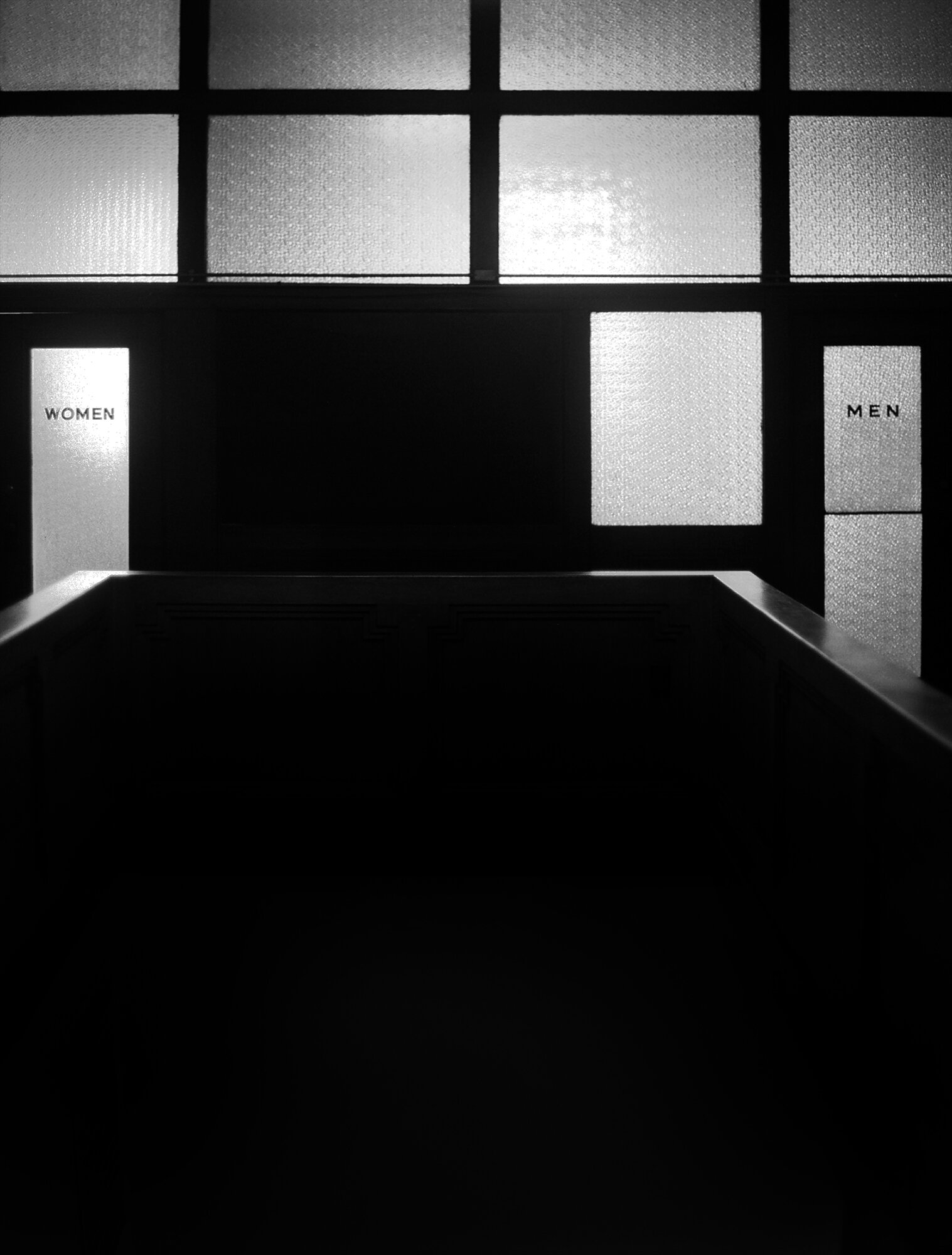Twenty Years
An exquisite, relentless tension is barely contained within the borders of Jason Langer’s photographs. This tension is skillfully amplified by composition, evocative subject matter, and a sophisticated printing style. Through these satisfying elements Langer urges us to embrace the potent mix of pleasure and anxiety that tension offers. His images court and quickly seduce us with familiar subject matter made popular in the early twentieth century—the lone pedestrian passing almost unnoticed through a dark city, the surreal shop window full of mannequins or masks. Yet, photographs so traditional in subject and evocative of past eras must offer us more than the pull of nostalgia to remain relevant today. Embodied in Langer’s imagery is a subtle yet enticing undercurrent fueled by the bond between the photographer’s personal philosophy and the essence of his chosen medium. This undercurrent represents the universal struggle to attain permanence, the drive to find something to hold onto, in our fleeting world.
Langer regularly and with conviction speaks of photography and Buddhism in the same breath. His search for universal meaning is evident in his imagery, and central to his being is his desire to follow the ways of the Buddha, to release himself from the trappings of modern society and to embrace impermanence, one of the Three Marks of Existence. According to Buddhist teachings, the ability to liberate oneself from desire and possessions is necessary to achieve enlightenment. It is therefore paradoxical that Langer’s 2013 publication of photographs is titled Possession. Curiously, the strength of his conviction in the Buddhist path is filtered through photography, a medium which attempts to make the transitory permanent.
During the mid-nineteenth century, as the new process of photography gained prominence as a spectacular and increasingly accessible means of recording the visible world, photographers made lifelike portraits that sitters gave to their loved ones; that police placed on broadsides to describe the wanted and used as records for investigation; and that physicians used to consult when studying illness or to chart the effects of trauma on the body. Landscape photographers created documents used in court as evidence in property lawsuits and as proof of the many resources—minerals, forests, waterways—to be harvested in the American West. Indeed, in 1859, physician and author Oliver Wendell Holmes, Sr., described the photograph as a “mirror with a memory.” The photograph, striving for perpetuity, was a means to make permanent a person, a landscape, or an event.
Today, photographers and consumers of the medium alike praise photography’s ability to capture a tiny percentage of the millions of fleeting instants that make up a lifetime. Henri Cartier-Bresson called his many slivers of time “decisive moments”—the exact instants when the harmony between humanity and environment is made manifest in visually poetic arabesques and to this day transcend the march of time. How, then, does someone like Langer, who believes so strongly in the spiritual benefits of impermanence and the transcendent release of possessions, also traffic in the permanent nature of photography?
Lacking the key to Langer’s psyche or soul, I cannot answer this question. But I do know that these polarities do not indicate contradiction. They instead signal a willingness to embrace the complexities of the human condition. Consider the pacing of this book: It begins with both subtle and overt symbols of death—the cemetery, the skull, the eviscerated body. All are static. Subsequent photographs pull us toward life through purposeful physical motion, whether singing or striding or smoking. Finally, the revelation of the human form, stripped of the social trappings of clothing, suggests humanity’s potential and power and fragility. Langer pushes us, through the beauty of well-crafted imagery, to tangle with the tension that builds between life and death, and between an artist and his medium.
Langer’s oeuvre, honed over many years, belies not only photographic skill but also the artist’s struggle with concepts that we all must confront day after day. He continues to pull together dark and light, male and female, enlightened and naïve, for his own benefit as well as for ours. His very physical subjects and the physical negatives, prints, and books he creates seem permanent, and we may possess them for a time. As we seek meaning and pleasure in his photographs, Langer’s work will always remind us that embracing the tension and mystery of the human condition is a well-deserved reward for wrestling with the impossible, just as he himself does each day.
by Julia Dolan,
Minor White curator of Photography, Portland Art Museum







































